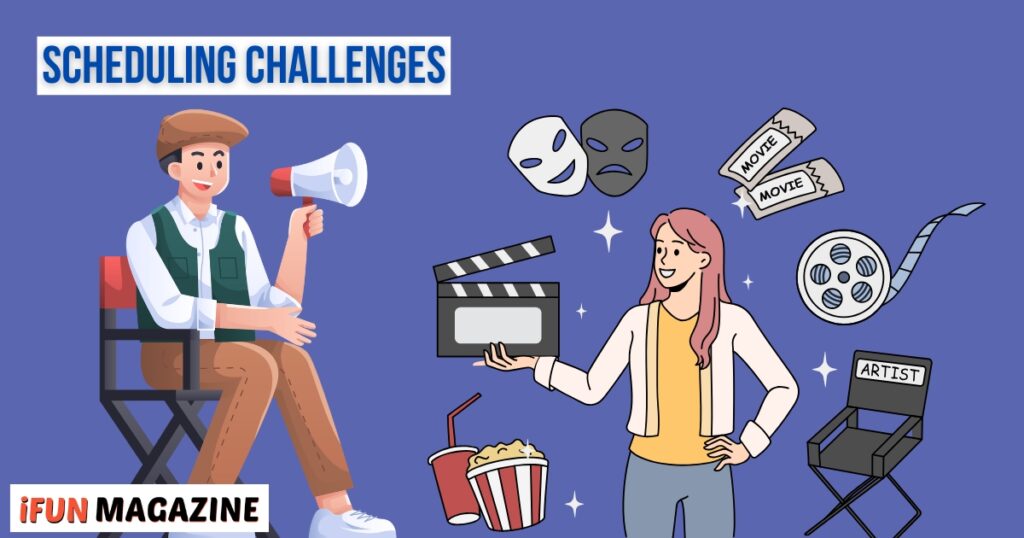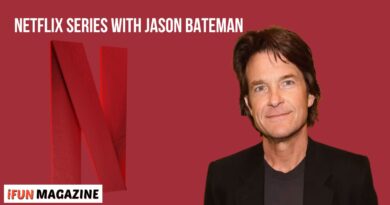Have you ever noticed a favorite character sounding different in a movie than a TV show? This change often surprises fans and raises curiosity about the reason behind it. Voice actors can vary due to differences in budget between films and TV shows. Movies generally have higher budgets, allowing studios to hire big-name celebrities.
Scheduling conflicts also play a significant role, especially if the original actor is unavailable. Creative choices by directors may lead to the selection of a voice that fits a new vision. This article explores these reasons, helping fans understand why these differences occur.
In this post we will learn in details about Why Are TV Show Voice Actors Different Than the Movie.
Differences in Voice Actors Between TV Shows and Movies
Budget Constraints
Movie Production Budgets Are Larger
Movies often have much bigger budgets than TV shows, which allows studios to hire famous celebrities as voice actors. For example, Tom Hanks voiced Woody in Toy Story, adding star power to the film.
Big movies like Shrek feature well-known actors like Eddie Murphy and Cameron Diaz. Directors often use high-profile voices to attract more attention to the film. These budgets allow creative teams to invest heavily in talent to elevate the film’s appeal.
TV Shows Have Limited Budgets
TV shows have smaller budgets, so they prefer less famous voice actors. This approach helps reduce overall production costs while maintaining quality. TV shows plan for recurring roles and long-term expenses, making affordability important.
For instance, many animated series rely on versatile voice actors who can perform multiple characters. This strategy keeps productions sustainable across multiple seasons while still entertaining audiences.
Scheduling Challenges

Movies Have Flexible Production Timelines
Movies can spend several years producing, allowing plenty of time for creative work. Studios plan schedules to fit the availability of popular A-list celebrities. Actors can block out several months for recording sessions without much conflict. For instance, big names like Tom Hanks and Eddie Murphy recorded voices over extended timelines. This flexibility helps filmmakers ensure top-quality performances from renowned actors.
TV Shows Have Tight Deadlines
TV shows follow strict weekly or seasonal schedules, leaving little room for flexibility. Long-term commitments make it hard to keep the same actors across seasons. Some actors get replaced if their schedules conflict with tight production timelines. A typical example is voice actors leaving animated shows due to rising demand elsewhere. This challenge forces producers to find efficient casting solutions for consistent character voices.
Creative and Artistic Decisions
Adapting the Character for Different Mediums
TV characters often need adjustments to fit the episodic storytelling format. For instance, a character might appear more relatable to maintain audience engagement across episodes. Their tone or personality can shift slightly to suit weekly storytelling dynamics.
Movies focus on delivering a concise, impactful arc, but TV requires steady character growth. For example, a hero in a film may seem grander, while on TV, they become approachable. These changes ensure characters connect with viewers over a more extended period.
Casting Decisions Reflect the Target Audience
TV shows often hire actors who are familiar to their target audience. This approach helps the audience feel more connected to the characters and stories. For example, TV adaptations might choose younger actors for teen-focused audiences.
Localization can also influence casting, like hiring actors popular in a specific region. These decisions ensure the show appeals directly to its intended viewers. TV producers create stronger and lasting relationships with their fans by catering to audience preferences.
Case Studies of Iconic Characters

Example 1: Shrek Franchise
Mike Myers vs. TV Spin-offs
The Shrek movies feature Mike Myers as Shrek’s voice. However, TV adaptations chose a different actor for Shrek’s voice. This decision occurred due to the budget constraints of television production. Hiring Mike Myers for TV would have exceeded financial limits.
Scheduling conflicts often make high-profile actors unavailable for TV projects. Producers also prefer actors with lower rates to fit television budgets. These choices ensure that production continues while staying cost-efficient.
Example 2: Disney Characters
Aladdin (Robin Williams vs. TV Voice)
Robin Williams voiced Genie in Aladdin’s original movie, making the character iconic. However, the TV show used another actor for Genie instead. Disney faced challenges due to contractual agreements with Robin Williams.
His contract limited involvement in additional productions beyond the feature film. Budget limitations also made hiring Robin Williams unfeasible for the TV series. Using another actor allowed the show to continue with reduced production costs.
Impact on Fans and Continuity
Fans’ Reactions to Voice Actor Changes
Fans often notice voice changes between movies and TV adaptations. These changes can cause mixed reactions from audiences. Many fans feel strong connections to original voice actors. \
Different voices disrupt fans’ enjoyment of their favorite characters. Some fans accept the changes and focus on the story instead. Others compare the old and new voices and share opinions online. Studios often face criticism when fans dislike the new actors.
How Studios Maintain Continuity
Studios hire sound-alike actors to keep characters familiar to fans. These actors mimic the original voices as closely as possible. Teams may use voice modulation software to match the previous actor’s tone.
Sound editing enhances consistency between old and new voice performances. Studios aim to keep characters recognizable while managing production budgets. These efforts maintain continuity and help protect the story experience for the audience.
Conclusion
Voice actor changes happen due to budget, scheduling, or creative team decisions. Studios often need to choose new actors when schedules do not align, and budget limits can prevent hiring the same actor for different productions.
Creative choices may lead to changes that match the new visions of characters. While jarring for fans, these changes reflect real challenges in production processes. Understanding these reasons helps fans appreciate the work behind creating these stories.
FAQs
What is the difference between TV actors and movie actors?
TV actors work on shorter scenes with quick timelines, while movie actors have longer shoots and bigger budgets. TV shows often focus on character growth, while movies focus more on action or story events. Both require unique skills and acting styles.
What is the difference between an actor and a voice actor?
Actors perform on camera and use physical expressions. Voice actors perform with their voices only. Voice actors record in studios without sets. Actors interact with props and other people directly. Both need to create believable, engaging performances for audiences.
How do voice actors sound so different?
Voice actors practice changing their voices through training. They adjust pitch, tone, and speed effectively, making each character unique and distinct. Advanced voice techniques create unique emotions and personalities. Voice acting takes years of practice and skilled vocal control.
How do voice actors do different voices?
Voice actors study characters’ emotions, backgrounds, and personalities. They imitate accents, tones, and speech patterns. Their creative imagination helps them find unique voices. Professional training teaches them control over pitch and vocal range. Improvisation skills also help voice actors change their voices naturally.




